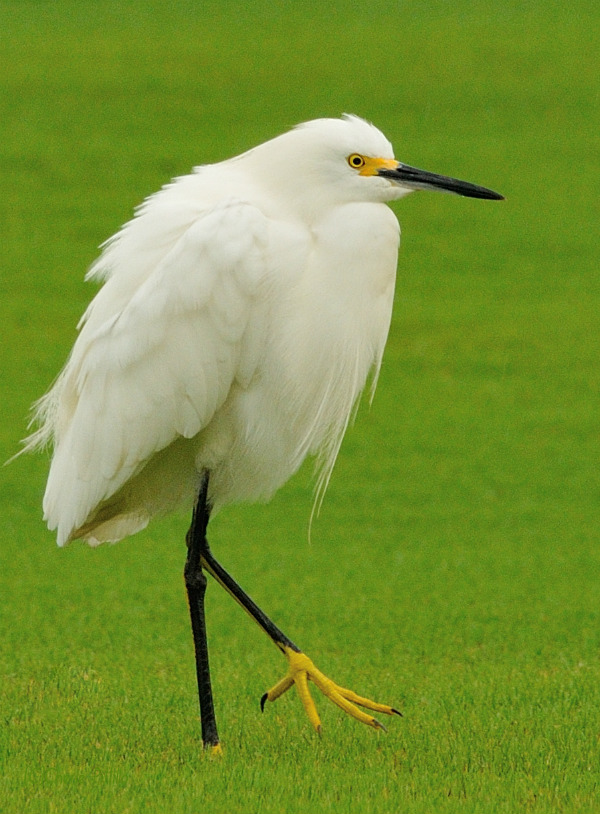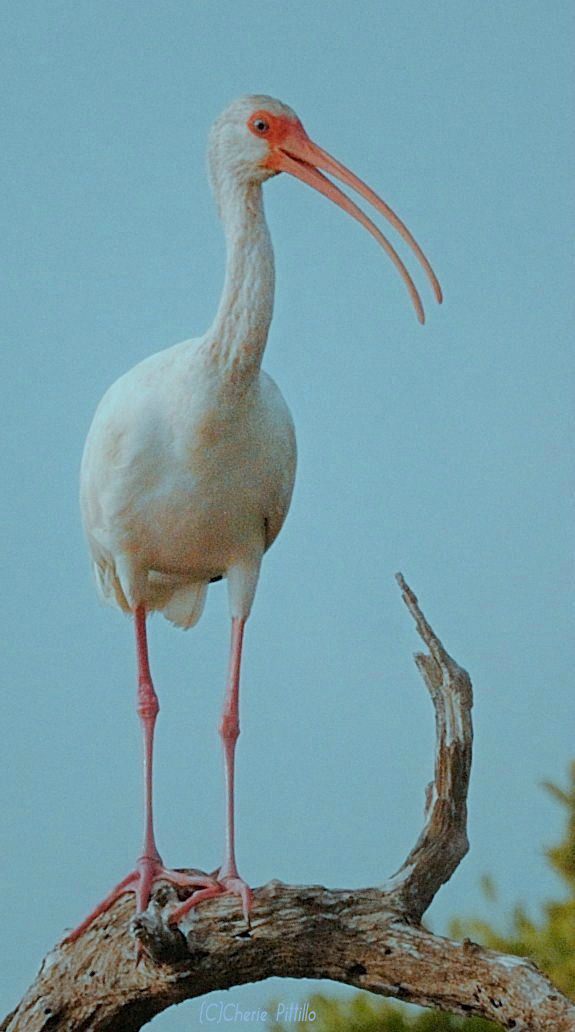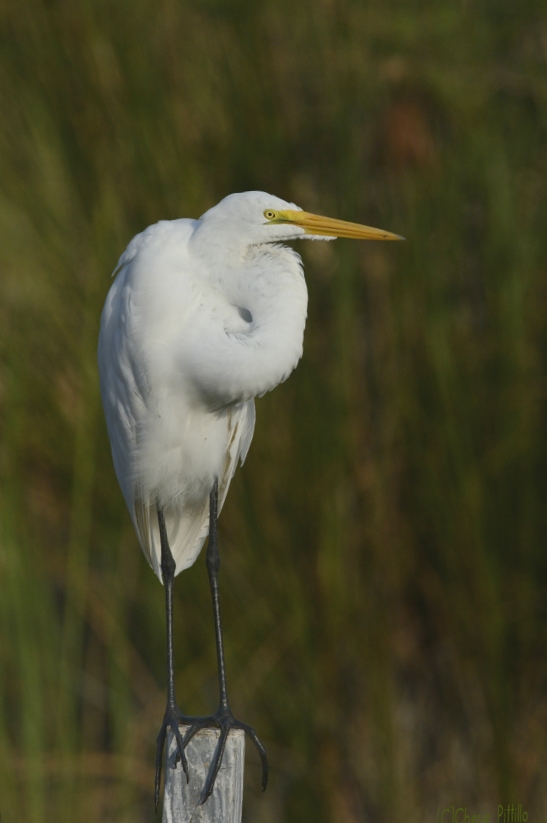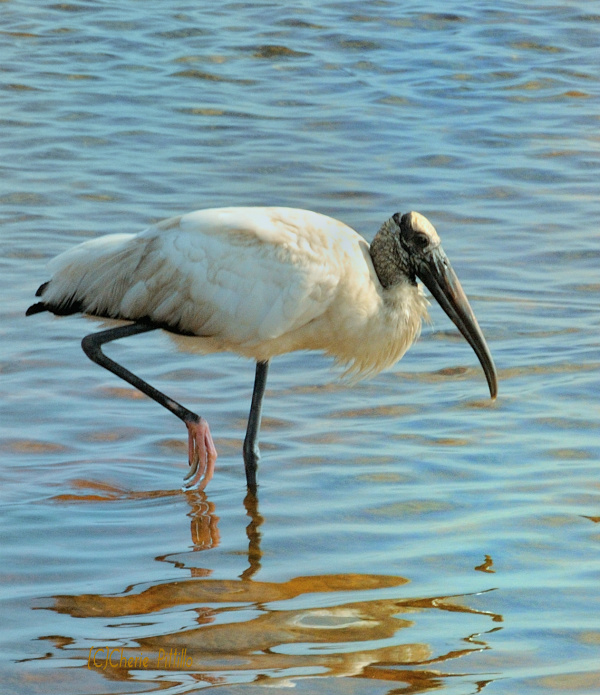“Hey, look at those white cranes in the mangroves.”
“The Yucatan Peninsula doesn’t have any cranes except for a rare, lost visitor as the pale gray Sandhill Crane.”
“Well, then, are they white storks?”
“The most common white stork in the Yucatan is the Wood Stork, although a white-bodied *Jabiru Stork can be seen near San Felipe and other areas. That stork has a big red and black neck. But I remember in college I learned the Wood Stork was in the ibis family, but commonly called Wood Stork instead of White Ibis. Thanks to DNA analysis, it finally found its rightful family home…the STORK family, Ciconiidae.
“Okay, are those birds at the mangrove white ibis?”
“Adult White Ibis have stunning hot pink down-curved bills which they use to probe for prey in shallow water. During mating season matching hot pink stockings and feet adorn those white bodies. But the birds you see are not White Ibis.”
“Why are you giving me such a hard time about what kind of birds they are?”
“Because we have several white feathered species in the Yucatan wetlands and along the coast. A white bird is not merely a white bird. I just want to help people recognize the differences and empower them to impress their friends with a few simple names.
Sometimes when we apply a common name to an animal, we remember where we first saw it. That awareness begins to show us diversity and maybe, just maybe, to help conserve that animal’s home.”
“Hmm. Back to the name game. I’ve heard of herons and egrets. Are those birds feeding along the mangroves herons or egrets?”
“Yes, those are called egrets.”
“How did you know they weren’t herons?”
‘This may be confusing, but egrets are in the heron family and are herons. I could tell they are ‘egrets’ by their bill colors and leg/feet colors. Plus I didn’t see the yellow bill and fleshy-colored legs of the Great White Heron. We seldom see that species in the Yucatan. For most of my life, it was called the white morph of the Great Blue Heron. Again, DNA analysis convinced some scientists it is a distinctive subspecies.”
By the way, ‘egret’, derived from the French name, ‘aigrette’, which referred to the white plumes used in ladies hats and fashionable clothing in the late 1800s. Fanciful feathers existed and still do during the egret breeding season. Thousands of egrets and other bird species were slaughtered for their fancy plumes. I would call that plume destructive. At that time, ‘egret’ referred to the white feathered wading birds such as Snowy Egret and Great Egret. Today other herons may be called ‘egrets’.
Now let me show you how easy it is to identify eight common white bird species in the Yucatan plus info about *four extras. Just remember to concentrate on their bill and leg colors. I’ve added size starting with the smallest egret. Also, the egrets and herons I mention fly with their long necks curved into their body while storks, cranes, and ibises fly with outstretched necks.”
Cattle Egret adult: yellow bill, grayish/yellowish legs, about 20 inches tall, usually hang around livestock to snatch up insects but can be seen at ranches near the coast and in Merida’s parks
Little Blue Heron: white juvenile, 2 tone bill gray/dusky, greenish-yellow legs, about 2 feet tall
American White Ibis adult: pink down-curved bill, hot pink legs and feet during breeding season, about 2 feet tall, black tipped wings in flight, not an egret or heron
Snowy Egret adult: black bill, black legs with yellow feet, 2 feet tall ( immatures have olive-yellowish legs)
Reddish Egret white morph: pink and black bill; dark legs, about 2.5 feet tall; refer to link to Part 1 http://www.theyucatantimes.com/2016/01/backyard-birding-in-merida-yucatan-and-beyond-heron-or-egret-part-1/
Great Egret adult: yellow bill, black legs and feet, about 40” tall
*Great White Heron adult: yellow bill, yellowish legs, 4’ or more, the largest heron

Imagine this Great Blue Heron with white plumage and it would look like the Great White Heron with lighter colored legs.
Wood Stork adult: large dark, thick bill, black legs with pink “high tops” during breeding, black flight feathers, bulky, over 4 feet tall(some resources state Great White Heron is taller)
American White Pelican adult: yellow bill, orange feet, black flight feathers, huge, looks like a pelican on steroids
Sometimes I spot a white-feathered, *King Vulture in the Rio Lagartos area which looks similar to the White Pelican in flight due to those black flight feathers in both species. I mention the vulture, the white heron, and the Jabiru Stork in case any of us experience the good fortune to see any of them.”
“Thanks for your help. You’re right; it is easy to tell the birds apart when I can see the colors of their bills and legs.”
“I’m glad because you won’t have any ‘egrets’ or not have ‘heron’ your head or in your brain about these species. (Thanks to friend, Theresa, for the heron pun.) Oh, and stay tuned to Part 3 about day and night-herons. Yep, there’s so much more!”
REVISIT NATURE, RENEW YOUR SOUL
Mentioned Species:
Cattle Egret, Bubulcus ibis, Garza Ganadera (Spanish)
Little Blue Heron, Egretta cerulean, Garza Azul (Spanish)
Snowy Egret, Egretta thula, Garza Dedos Dorados (Spanish) Ka’an ook (Mayan)
Reddish Egret, Egretta rufescens, Garza Canela (Spanish)
Great Egret, Ardea alba, Garza Blanca (Spanish), Sak nojoch bok(Mayan)
Great Blue Heron, Ardea herodias, Garza Morena, (Spanish)
Great White Heron, Ardea herodias occidentals,
Wood Stork, Mycteria americana, Cigüeña Americana o Galletán (Spanish)
Jabiru Stork, Jabiru mycteria, Cigüeña Jabirú (Spanish)
White Ibis, Eudocimus albus, Ibis Blanco (Spanish) Koko (Mayan)
American White Pelican, Pelecanus erythrorhynchos, Pelicano Blanco (Spanish), Sak p’onto’
King Vulture, Scarcoramphus papa, Zopilote Rey (Spanish), Batab ch’oom (Mayan)
DISCLAIMER: References do not agree on details about this species. Here are my resources: Sal a Pajarear Yucatan Guia de Aves, A Guide to the Birds of Mexico and Northern Central America, Birds and Reserves of the Yucatan Peninsula, http://macaulaylibrary.org/ a website from Cornell Lab of Ornithology, Lives of North American Birds,
http://www.earthlife.net/birds/herons.html.
http://www.ct.gov/deep/lib/deep/wildlife/pdf_files/outreach/connecticut_wildlife_magazine/cwja02.pdf
https://www.dnr.sc.gov/swap/supplemental/birds/colonialnestingwadingbirdsandalliesguild2015.pdf
https://www.allaboutbirds.org/guide/Great_Egret/id
http://animaldiversity.org/accounts/Eudocimus_albus/
http://animaldiversity.org/accounts/Ardea_alba/
The Everglades Handbook: Understanding the Ecosystem, Third Edition
http://www.fws.gov/refuge/Great_White_Heron/wildlife_and_habitat/greatwhiteheron/
Cherie Pittillo, “nature inspired,” photographer and author, explores nature everywhere she goes. She’s identified 56 bird species in her Merida, Yucatan backyard view. Her column, published on the 7th and 21st of each month, features anecdotes about birding in Merida, Yucatan and beyond. Contact: [email protected] All rights reserved, ©Cherie Pittillo










